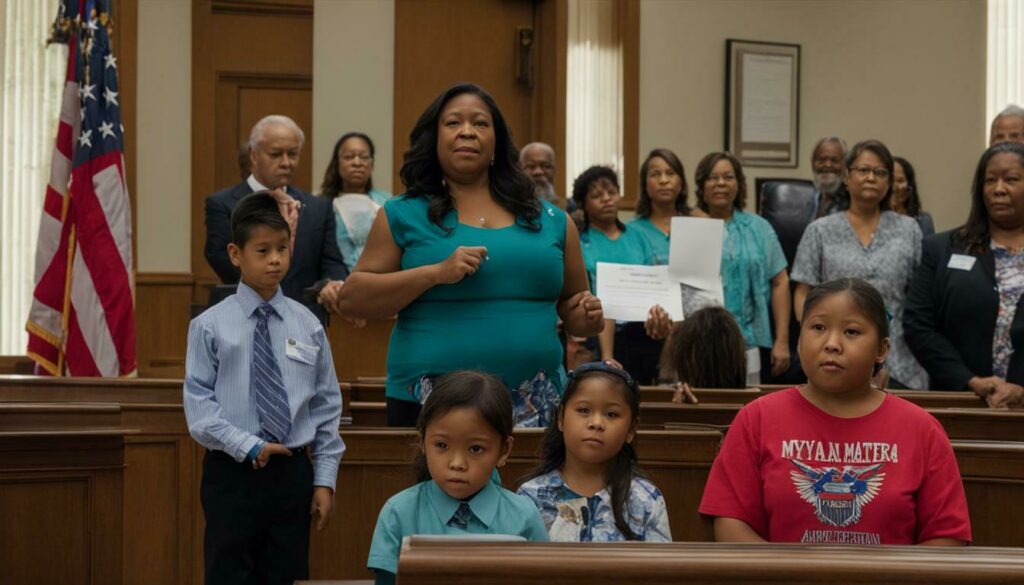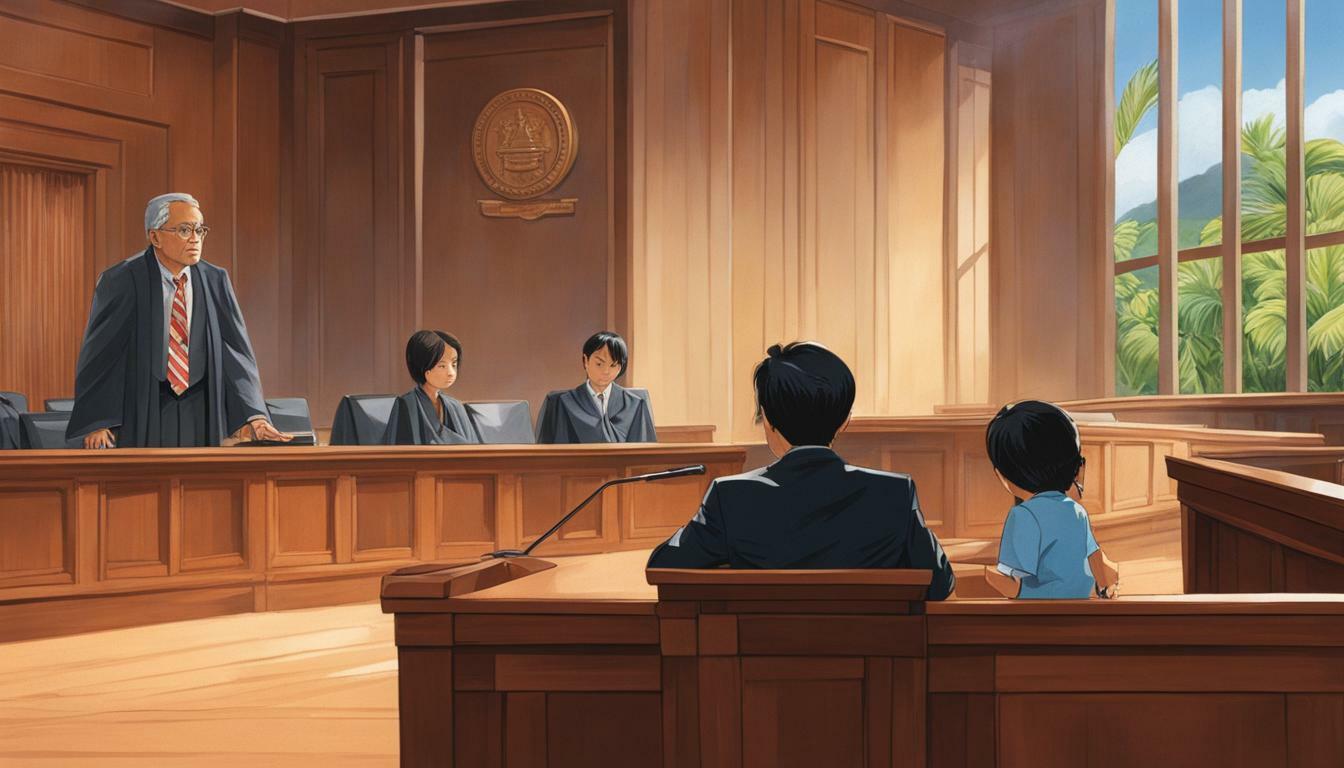Child witness protections in Hawaii ensure the safety and well-being of children who are involved in legal proceedings as witnesses. The state has implemented a comprehensive Child Protective Act that prioritizes the health and safety of children who have experienced harm or are in dangerous situations. This act establishes jurisdiction and venue for child protection cases, ensuring that appropriate measures are taken to address the needs of vulnerable children.
Under the Child Protective Act, court proceedings, evidence, and orders related to child protective cases are carefully regulated to provide a secure and supportive environment for child witnesses. The act also outlines safe family home factors and pre-petition procedures, further strengthening the protection of children in Hawaii.
To assist child witnesses during court proceedings, there are guidelines in place to minimize trauma and anxiety. These guidelines explain the courtroom process and highlight reforms designed to help child witnesses testify effectively. Prioritizing reliable testimony, the guidelines offer strategies to reduce anxiety for child witnesses and ensure that their voices are heard.
- Hawaii has a comprehensive Child Protective Act to safeguard child witnesses.
- The act establishes jurisdiction and venue for child protection cases.
- Guidelines are in place to assist child witnesses and reduce trauma and anxiety.
- Emphasis is placed on promoting reliable testimony and providing support to child witnesses.
- Hawaii prioritizes the safety and well-being of child witnesses during legal proceedings.
Child Witness Protections in Hawaii: Laws and Programs
The Child Protective Act in Hawaii establishes legal provisions and guidelines to protect child witnesses throughout court proceedings. It aims to prioritize the safety and well-being of children who have been harmed or are in dangerous situations. This act outlines jurisdiction and venue for child protection cases, covers court proceedings, evidence, and orders related to child protective cases, and provides guidelines to assist children who are testifying in court.
The guidelines for child witnesses in Hawaii are designed to reduce trauma and anxiety during the courtroom process. They explain the procedures and reforms in place to support child witnesses, emphasizing the importance of reliable testimony. The guidelines also provide strategies to alleviate anxiety for child witnesses, ensuring their comfort and confidence while giving testimony.
The Child Safety Factors Guidelines are another essential aspect of protecting child witnesses in Hawaii. These guidelines are used when completing a Child Safety Assessment and cover various threats to a child’s safety, including violent behavior, lack of supervision, substance abuse, and concerns regarding the child’s whereabouts. By considering these factors, Hawaii’s child protection system can effectively assess and address risks to the safety and well-being of child witnesses.
| Child Witness Protections in Hawaii: Laws and Programs |
|---|
| Child Protective Act |
| Provides legal provisions and guidelines |
| Ensures safety and well-being of child witnesses |
| Covers court proceedings, evidence, and orders |
| Guidelines for Child Witnesses |
| Reduce trauma and anxiety |
| Explain courtroom process and reforms |
| Emphasize importance of reliable testimony |
| Provide strategies to reduce anxiety |
| Child Safety Factors Guidelines |
| Used for Child Safety Assessment |
| Cover various threats to child’s safety |
“The Child Protective Act and the guidelines in place ensure that child witnesses receive the necessary support and protection during legal proceedings. By prioritizing their safety and well-being, Hawaii’s legal system strives to create an environment that fosters reliable testimony and reduces the potential trauma and anxiety experienced by child witnesses.”

Hawaii’s child witness protection program aims to ensure a safe environment for child witnesses throughout court proceedings. The Child Protective Act establishes legal provisions and guidelines to safeguard the well-being of children who have been harmed or are in dangerous situations. These protections include jurisdiction and venue for child protection cases, as well as guidelines for court proceedings, evidence, and orders related to child protective cases.
The guidelines specifically address the needs of child witnesses, aiming to reduce trauma and anxiety during their involvement in the legal process. By explaining the courtroom procedures and highlighting reforms to help child witnesses testify, these guidelines provide vital support. They also emphasize the importance of reliable testimony and offer strategies to alleviate anxiety for child witnesses, ensuring they can provide accurate accounts without unnecessary distress.
Hawaii’s child witness protection program also incorporates the Child Safety Factors Guidelines, a crucial aspect of assessing and addressing risks to a child’s safety. These guidelines consider various threats, such as violent behavior, lack of supervision, substance abuse, and concerns about a child’s whereabouts. By considering these factors, Hawaii’s legal system can effectively protect child witnesses and ensure their well-being throughout the entire process.
Ensuring Child Witness Safety and Well-being in Hawaii
Hawaii prioritizes the well-being of child witnesses by implementing measures such as confidentiality, accommodations, and strategies to reduce anxiety during their testimony. The state recognizes the importance of maintaining child witness confidentiality to protect them from potential harm and ensure their safety. This includes safeguarding their identity and personal information from being disclosed during court proceedings.
In addition, Hawaii provides accommodations to child witnesses to create a supportive and comfortable environment during their testimony. These accommodations may include using video technology for remote testimony or providing a separate waiting area to reduce the stress and anxiety experienced by child witnesses. By implementing these accommodations, Hawaii aims to minimize the potential trauma associated with court proceedings.
The state also emphasizes the need for reliable testimony from child witnesses. Hawaii has established guidelines that explain the courtroom process and highlight reforms designed to assist child witnesses in giving their testimony effectively. These guidelines provide recommendations on how to prepare children for court, ensuring they are aware of what to expect and feel supported throughout the process.
Hawaii further employs strategies to reduce anxiety for child witnesses during their testimony. By creating a calm and secure atmosphere, child witnesses are more likely to provide accurate and reliable information. These strategies may include allowing a support person, such as a family member or therapist, to accompany the child during the testimony, or utilizing child-friendly language and questioning techniques to ensure clear communication.
FAQ
Q: What is the Child Protective Act in Hawaii?
A: The Child Protective Act in Hawaii is a law that prioritizes the safety and health of children who have been harmed or are in dangerous situations.
Q: What does the Child Protective Act cover?
A: The Child Protective Act covers jurisdiction and venue for child protection cases, safe family home factors, pre-petition procedures, court proceedings, evidence, and orders related to child protective cases.
Q: Are there guidelines to assist child witnesses in court?
A: Yes, there are guidelines in place to assist children who are testifying in court. These guidelines explain the courtroom process, highlight reforms to help child witnesses testify, and provide advice on preparing children for court.
Q: How do the guidelines reduce trauma and anxiety for child witnesses?
A: The guidelines emphasize the importance of reliable testimony and offer strategies to reduce anxiety for child witnesses, such as accommodations and support during court proceedings.
Q: What are the Child Safety Factors Guidelines?
A: The Child Safety Factors Guidelines are used when completing a Child Safety Assessment and cover various threats to a child’s safety, including violent behavior, lack of supervision, death of a sibling, dangerous impulsive behavior, substance abuse, and concerns regarding the child’s whereabouts.






